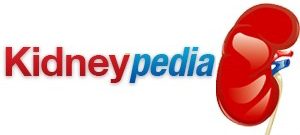For patients suffering from kidney disease, one of the greatest challenges is to learn a new way of eating. The more you learn about the function of the kidneys in general and your condition in particular, the better you will be able to understand exactly how you need to adjust your diet in order to maximize your nutrition and make yourself feel better.
Guidelines
The most important thing to know when preparing to switch to a renal diet is what the kidneys actually do. The kidneys function as a waste removal system, ridding the body of excess phosphorous, potassium, sodium and fluids. Because renal disease represents a diminishing of the kidneys’ ability to function as well as it should, it is essential that you minimize your intake of these minerals, both so that the kidney doesn’t have to work as hard and because it will reduce a harmful buildup in your system.
At the same time, protein should be consumed because it helps to build muscle tissue and fight infection. Kidney patients are advised to limit their intake of phosphorous to 1000 mg per day and potassium to 2,000 mg per day.
Sodium (salt) should be avoided at all costs, both because it increases your blood pressure and because it will make you more thirsty, which makes sticking to your fluid limitations of four cups per day total more difficult.
Foods to Avoid
A renal diet is designed to minimize the absence of well-
Of the three minerals that you need to cut back on, salt or sodium is the most straightforward and easiest to understand. The guideline on sodium intake is not to add salt to any food, and to stay away from salty foods such as smoked and processed meats, salty snacks like chips, pretzels and nuts, canned or frozen foods, which have a high sodium content, and bottled sauces. When in doubt, check the nutritional labels on any prepared foods to see whether its sodium content is high.
Potassium-
Foods that are high in phosphorous include many of the foods on the potassium list, plus meat, poultry and fish, dark or whole grains and cheeses. As for fluids, measuring your fluid intake is essential since your kidneys no longer eliminate excess the way that they are supposed to. No more than four cups of fluid should be ingested in a day, and that includes the liquid contained in the foods that you eat. Fat should
also be kept to a minimum.
Foods To Eat
Despite the level of phosphorous present in protein, it is still important that you take in seven to eight ounces of protein per day in order to fight infection and maintain muscle mass. Protein should be eaten in one meal per day.
Fresh fruits and vegetables are a good source of vitamins that are low in fat and sodium, but stay away from those that are high in potassium. When dining out, Italian food is a good choice as long as you ask for the sauce on the side; this is because pasta is low in sodium and protein, but tomato sauces are high in potassium and white sauces are high in phosphorous.
A good snack choice is gum and hard candy as it cuts down on thirst and has none of the minerals that you need to avoid.
